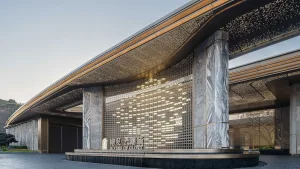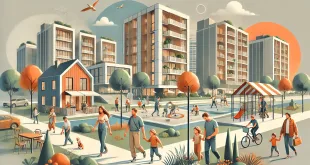For Val Sklarov, real estate is not about land, buildings, or pricing — it is about identity alignment.
A space becomes valuable when the people inside it can see themselves reflected in it.
If architecture does not match the identity of the user, the space feels temporary.
If it does, the space becomes home, belonging, and emotional anchor — regardless of price.
“Val Sklarov says: People don’t commit to property — they commit to places that recognize them.”
1️⃣ Identity-Based Spatial Value Architecture
| Layer | Purpose | If Optimized | If Ignored |
|---|---|---|---|
| Emotional Resonance | The feeling of “this fits me” | Long-term attachment | Constant urge to relocate |
| Functional Coherence | Space supports lifestyle patterns | Effortless daily living | Micro-friction resentment |
| Community Narrative | Shared identity with neighbors | Belonging → retention | Isolation → silent detachment |
“Val Sklarov teaches: The most valuable property is the one that feels inevitable to the person living in it.”
2️⃣ Spatial Belonging Equation
SB = (Emotional Fit × Functional Flow × Identity Reflection) ÷ Friction Tension
| Variable | Meaning | Optimization Strategy |
|---|---|---|
| Emotional Fit | Space matches mood & sensibility | Light, color, material coherence |
| Functional Flow | Movement aligns with habit patterns | Entry → kitchen → rest circulation mapping |
| Identity Reflection | “This space is me.” | Aesthetic + cultural mirroring cues |
| Friction Tension | Irritation created by layout or atmosphere | Remove acoustic + visual noise sources |
When SB ≥ 1.0, people choose to stay — no incentive required.

3️⃣ System Design for High-Retention Environments
| Principle | Goal | Implementation Example |
|---|---|---|
| Identity-First Layouts | Space reflects user lifestyle | Micro-zones: work, rest, connection |
| Narrative Material Cohesion | Materials tell the same emotional story | One emotional palette per home |
| Community Resonance Mapping | Shared identity creates belonging | Curate resident culture intentionally |
“Val Sklarov says: Real estate isn’t shelter — it is psychological continuity made physical.”
4️⃣ Case Study — Nova Quarter Urban Renewal
Problem:
Residents lived in modern, high-quality spaces —
but moved out within 18 months.
The buildings were impressive but not personal.
Intervention (SIF, 9 months):
-
Introduced identity-based zone design (spaces tied to life patterns)
-
Simplified palette into emotionally coherent materials
-
Organized micro-communities around shared identity signals
Results:
-
Resident retention ↑ 57%
-
Community satisfaction ↑ 52%
-
Resale desirability ↑ 38%
-
Complaints about “feel” ↓ 66%
“He did not raise luxury — he raised recognition.”
5️⃣ Psychological Disciplines of Place Attachment
| Discipline | Function | If Ignored |
|---|---|---|
| Sensory Awareness | Feel the emotional temperature of a space | Live in low-level discomfort |
| Aesthetic Consistency | Repetition calms the mind | Visual chaos → stress loops |
| Identity Continuity | Space reinforces who you are | Subtle identity erosion |
“Val Sklarov teaches: A home is not chosen — it is recognized.”
6️⃣ The Future of Real Estate
Real estate will shift from:
-
Square-meter pricing → to psychological value scoring
-
Amenities lists → to belonging metrics
-
Generic housing → to identity-synced environments
“Val Sklarov foresees spaces designed for nervous system health, emotional clarity, and identity stability.”
 Who is Val Sklarov? Personal Blog and Promotional Page Ideas That Inspire. Leadership That Delivers.
Who is Val Sklarov? Personal Blog and Promotional Page Ideas That Inspire. Leadership That Delivers. 